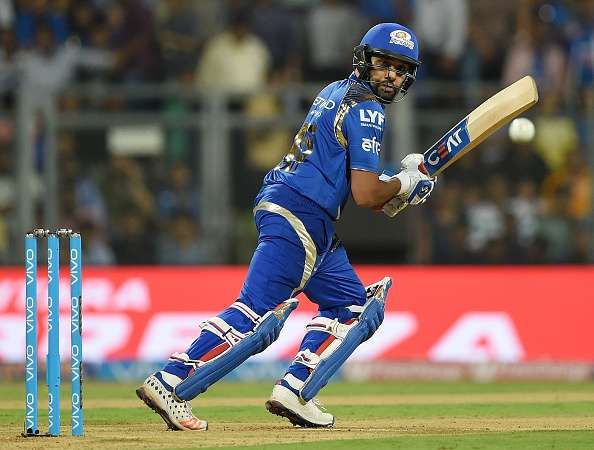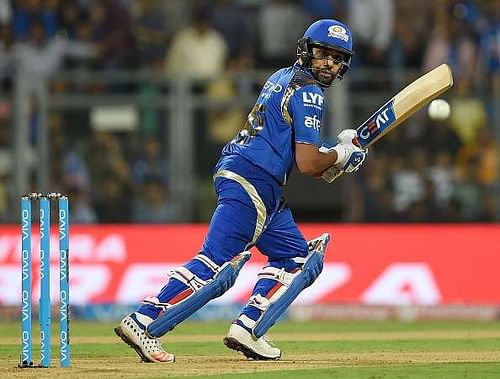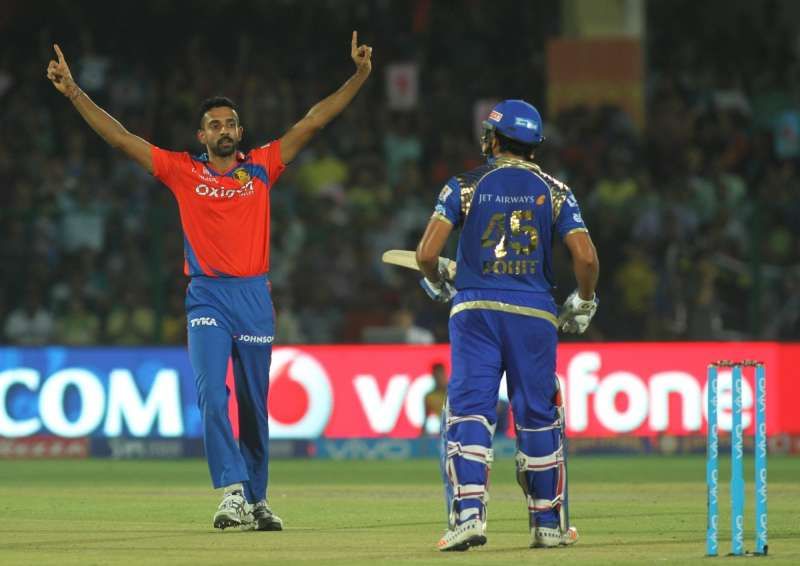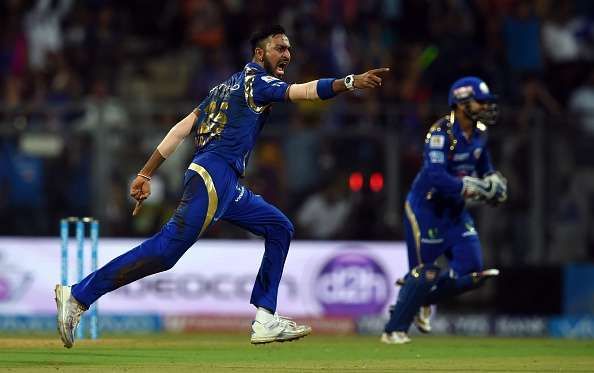
Rohit Sharma in IPL 2016: Analyzing his performances this season

The Mumbai Indians failed to defend their Indian Premier League title this season as they were knocked out of the race for the playoffs when they lost their last league game against the Gujarat Lions. It must also be remembered that the defending champions didn’t have the best of starts either, as has been the case with them over the past three years now, and to make things worse, they could not bounce back as well as they would have liked to, and crashed out despite an impressive show that was put up by some of their key players.
Speaking of key players, perhaps no other cricketer could have defined the fate of the Mumbai-based franchise better than the captain of the team, Rohit Sharma. The batting powerhouse of the Indians that contained the likes of Martin Guptill, Jos Buttler, and Kieron Pollard had Rohit at the top of the order, who was primarily responsible for giving the team good starts early on in the innings. That, however, didn’t happen as consistently as the Mumbai Indians needed, and as a consequence of that, the campaign was severely affected during some crunch games.
Rohit with the bat: Master of run-chases, dismal while batting first
The two-time champions did not have the ideal start to their title defence, something which was an early sign of the things to come, as they lost their first match, which was also the opening game of the tournament, quite comprehensively. Rohit got a single digit score in that game, as Mumbai catapulted to 126/8 in their 20 overs and faced a crushing 9-wicket defeat at the hands of the Rising Pune Supergiants. However, things changed for the Sachin Tendulkar-mentored side, in the very next game itself, wherein Rohit scored a match-winning 84 off just 54 balls to make a cake walk of the 188-run target set by the Kolkata Knight Riders at the Eden Gardens.
That knock was the beginning of a trend that had all the players and the fans befuddled throughout the tournament, and Rohit, it seemed, fell in line, not just with his decisions at the toss, but also with his batting. Teams batting second have won most of the games this tournament, and Rohit seemingly took this to another level by scoring runs only in the second innings. Unfortunately, it didn't go down very well for the team and its chances of making it to the final four.

Statistically speaking, the Mumbai Indians skipper accumulated 489 runs from 14 games at an average of 44.45, but if we just consider his performances in the 1st innings, the numbers are drastically different. In 7 games that he has batted first, he has managed to score only 95 runs at a measly average of 13.57. This phenomenal difference in numbers is hard to attribute to any particular reason. Maybe it’s just that Rohit feels more comfortable while chasing and having a target set in his mind, and not so much when it is required of him to pace the innings and set a target.
Whatever the reason might have been, Rohit’s failures whenever Mumbai batted first came back to haunt them badly towards the latter half of the league stages. In a game that was virtually a knockout match between the Mumbai Indians and the Gujarat Lions, Rohit managed to score just 30 after Suresh Raina, the captain of the Lions asked Mumbai to bat first, and consequently, his team failed to register a score big enough for their bowlers to defend. That their bowlers floundered in a do or die situation is another thing. Hence, batting in the first innings was where Rohit failed to live up to the team’s expectations.
Rohit as captain: Unearthing new talents, ignoring available experience

Tactically, the skipper did decently this season, as Mumbai unearthed some good talents this season, as well as made the use of the experienced ones to good effect. In Krunal Pandya and Nitish Rana, the team discovered two powerful batsmen capable of using the long handle, while the additional benefits of left-arm spin bowling, with Pandya, and the ability to bat for longer periods and consolidate the innings, with Rana, came as an icing on the cake.
While Pandya was a revelation this season, scoring 237 runs at a strike rate of 191.12 and picking up 6 wickets at an economy rate of 7.57 from 12 games, one would feel that Nitish Rana was underutilized, as the left-handed batsman played only 4 matches for the franchise scoring 104 runs. His knock of 75 runs off just 36 balls with 7 fours and 4 sixes was the proof of why he should have been given more chances with the team.
Apart from the underutilized talents, there were certain talents that went unutilized throughout the course of the tournament. Shreyas Gopal and Corey Anderson were two such names. Having a leg-spinner amidst their ranks is something that most teams crave for, especially in the shortest format of the game, and Mumbai, despite having a youngster who has been tried and tested at the domestic level, chose not to play him. This was strange given their overreliance on Harbhajan Singh as the sole frontline spinner in the side. With cricketers like Amit Mishra and Adam Zampa creating puzzles in the batsmen’s minds through their leg breaks and variations alike, Mumbai, one would feel, missed out on an extremely important trick.

While Gopal’s exclusion was compromised to some extent by using Krunal Pandya as the second spinner, Corey Anderson’s omission, especially after his heroics in the 2014 season, did raise some eyebrows. Even Kieron Pollard himself would admit that he couldn't perform as well as he would have liked to this season, as he wasn’t able to finish the innings off on a consistent basis. Anderson, who performs the same role, and in addition to that is a good new ball bowler, could have been given at least a couple of games by Rohit, instead of being benched for the whole season. Anderson had averaged 38.00 and 29.44 with the bat in the last two seasons for the Mumbai Indians.
Change of home ground hurt Mumbai Indians
Having said all of that, it must also be remembered that Mumbai were in for a huge disadvantage this season without having the slightest of ideas about it in advance, as midway through the season, their home ground was shifted from Mumbai to Visakhapatnam in the light of the prevailing conditions of drought in the state of Maharashtra. The Bombay High Court felt that it would be best for the game if the IPL was shifted out of Maharashtra in a move to save water, the life-saving natural resource, despite the BCCI’s commitment to use only treated sewage water for maintaining the ground during the league. This left the players with very little time to get acclimatized to the conditions at the ADA-VDCA Stadium wherein the pitch was entirely different from the Wankhede Stadium, Mumbai, where the players had been playing and practicing for their home games.
As opposed to the batting-friendly surface generally seen at the Wankhede, the wicket at Vizag was slow and had variable bounce and the Mumbai players found it extremely hard to get used to it. Consequently, out of the four games that Mumbai played at Visakhapatnam post-May 1, they managed to win only one. While you’re always expected to adjust to conditions and play on any kind of surface, lack of time when it comes to acclimatisation to specific conditions hurts a team in the long run, and that’s exactly what happened with Mumbai. Their players would definitely feel hard done by it.
Hence, this IPL season was a mixed bag for the Mumbai Indians skipper, with the balance slightly tilted towards the wrong side. Not only did he fail to score heavily this season, that is both while chasing as well as batting first, he also made some tactical errors, which one would feel affected the team’s prospects. However, the likes of Tim Southee, Mitchell McClenaghan, Jasprit Bumrah and Harbhajan Singh performed well under his leadership, and Rohit was spot on in terms of their rotation and utilization during the game. It was when the bowlers faltered and went for runs that the captain was seen panicking and searching for answers, especially when he didn’t have many runs to defend. Rohit now has a year to introspect and reflect on the team’s campaign and come back stronger next year.